Table of Contents
Japandi style is a harmonious blend of Japanese minimalism and Scandinavian coziness, combining the best of both worlds to create tranquil, functional, and aesthetically pleasing living spaces. Rooted in simplicity, natural materials, and intentional design, this trend has gained global popularity for its ability to transform homes into peaceful sanctuaries. Below, we explore its origins, philosophy, key elements, and how to incorporate it into your space.
Origins and Philosophy
The origins of Japandi style date back to the 1860s when Scandinavian designers began traveling to Japan. This cultural exchange fostered mutual admiration for simplicity, craftsmanship, and natural materials.
Japandi combines:
- Japanese Wabi-Sabi: The philosophy of finding beauty in imperfection.
- Scandinavian Hygge: The concept of creating cozy and comfortable spaces.
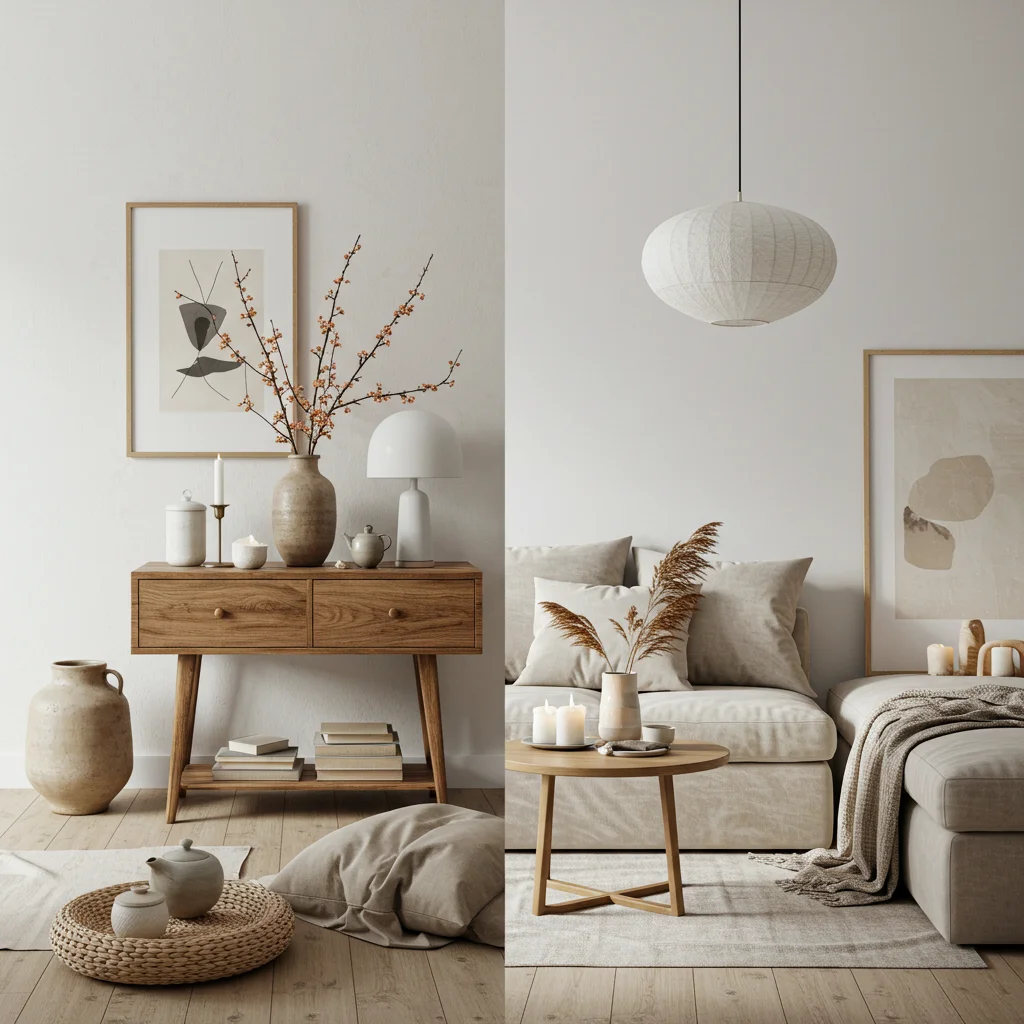
At its core, Japandi emphasizes mindfulness, sustainability, and the creation of calm atmospheres. It aligns with modern desires for eco-friendly living and quality craftsmanship that stands the test of time.
Key Elements of Japandi Style
1. Neutral Color Palette
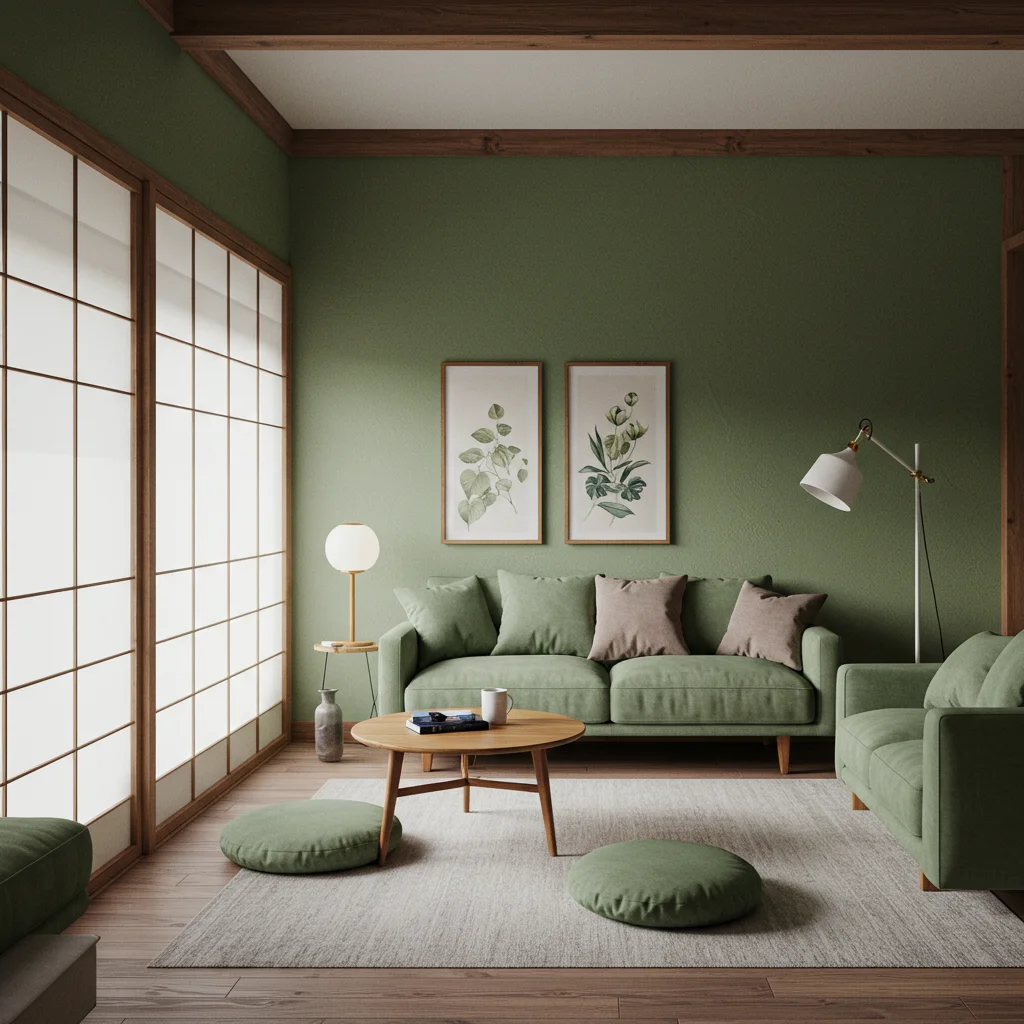
Japandi interiors feature muted tones like soft whites, beiges, taupes, and grays as a base. These are complemented by earthy greens, warm browns, and soft blues for subtle contrast.
2. Natural Materials

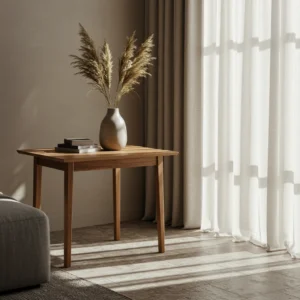
Materials such as wood (oak, walnut), stone, bamboo, linen, wool, and ceramics dominate Japandi design. These elements bring warmth and texture while connecting the indoors with nature.
3. Minimalism
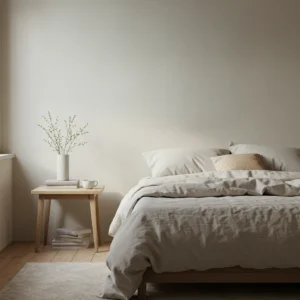
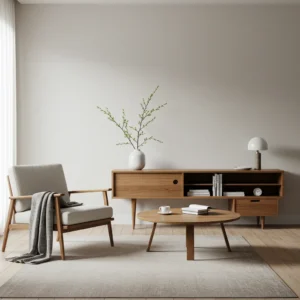
Decluttering is essential in Japandi spaces. Every item serves a purpose or adds beauty to the room. Negative space is celebrated to evoke tranquility.
4. Clean Lines and Organic Shapes
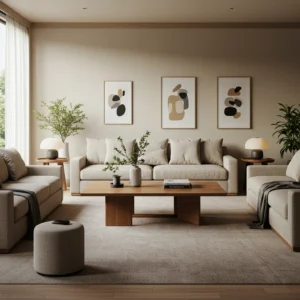
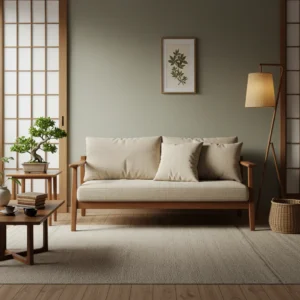
Furniture features simple yet elegant designs inspired by nature. Low-profile furniture with clean lines ensures functionality without compromising aesthetics.
5. Emphasis on Light
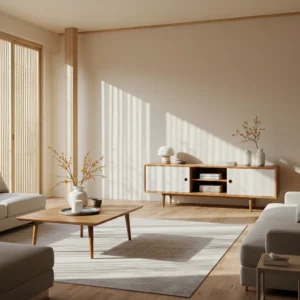

Natural light is maximized through large windows or skylights. Light colors and reflective surfaces enhance brightness while maintaining a serene ambiance.
6. Biophilic Design
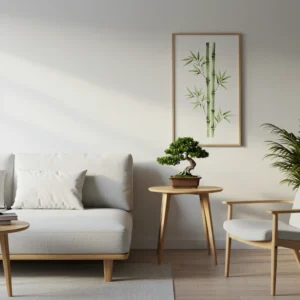

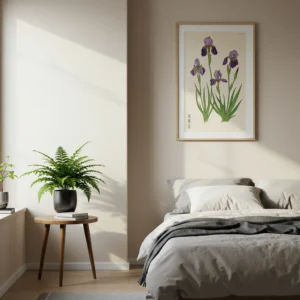
Incorporating plants or botanical prints strengthens the connection to nature. This creates a restorative environment that promotes well-being.
7. Craftsmanship
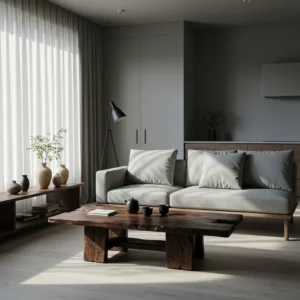
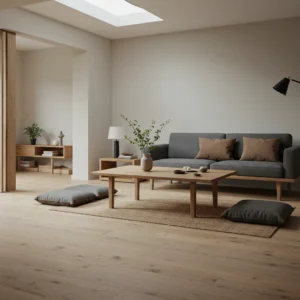
Handmade items like ceramics or furniture are valued for their uniqueness and durability, reflecting an appreciation for quality over quantity.
Japandi Color Palette
The Japandi color palette is central to its aesthetic. Below is a chart showcasing typical Japandi colors:
| Color Name | Hex Code |
|---|---|
| Soft White | #F5F5F0 |
| Beige | #D8CFC4 |
| Taupe | #B7A99A |
| Warm Gray | #AFAFAF |
| Muted Green | #A8BBA1 |
| Earthy Brown | #7B5B4C |
| Charcoal | #4B4B4B |
| Soft Blue | #A3C1DA |

Japandi Style Color Palette
How to Incorporate Japandi Style
1. Start with Decluttering
Remove unnecessary items to create open spaces that feel airy and calm.
2. Choose Functional Furniture
Opt for multipurpose pieces like beds with built-in storage or minimalist shelving units.
3. Add Natural Textures
Incorporate wood finishes, stone surfaces, or linen textiles to add warmth and depth.
4. Play with Light
Use sheer curtains or large windows to let in natural light. Mirrors can enhance brightness further.
5. Introduce Greenery
Add tall plants or small potted greenery to bring life into the space while maintaining its minimalist feel.
Why Choose Japandi?
Japandi style offers more than just aesthetics; it’s a lifestyle choice that promotes mindfulness and sustainability. By blending Japanese wabi-sabi with Scandinavian hygge, it creates spaces that are not only beautiful but also functional and restorative.
Whether you’re designing a cozy living room or a serene bedroom, Japandi style provides a timeless approach to modern living that nurtures both mind and spirit.
Citations:
[1] https://japandistore.com/blogs/inspirations/japandi-style
[2] https://wallpanelsworld.co.uk/blog/japandi/
[3] https://global.fujioh.com/2024/12/27/japandicolorpalette/
[4] https://www.housebeautiful.com/room-decorating/a45851530/japandi-interior-design-style/
[5] https://mojoboutique.com/blogs/blog/what-are-the-characteristics-of-japandi-style
[6] https://straightenuphome.com/blogs/news/10-essential-schemes-of-japandi-color-palette-to-transform-your-space
[7] https://www.styldod.com/blog/japandi-interior-design
[8] https://sabiinadesign.com/japandi-decor-style-interior-design/
[9] https://shopjapandi.com/blogs/design/japandi-color-palette
[10] https://basq.livelarq.com/design/what-is-japandi-interior-design/
[11] https://www.goodrichglobal.com/singapore/designs/find-out-the-8-key-elements-in-creating-a-japandi-interior-style-now/
[12] https://theartofzen.org/master-the-ultimate-japandi-color-palette/
[13] https://www.grahamandgreen.co.uk/about/guru/japandi/
[14] https://www.castlery.com/us/blog/japandi-interior-design
[15] https://www.kyuhyungcho.com/japandi-color-palette/
[16] https://www.vogue.com/article/what-is-japandi-style
[17] https://mojoboutique.com/blogs/blog/japandi-color-palette-ideas
[18] https://www.thespruce.com/japandi-design-4782478
[19] https://www.pinterest.com/pin/japandi-style-color-palette–4081455903153394/
[20] https://www.architecturaldigest.com/story/japandi-style-101
[21] https://www.pinterest.com/jsekatuba/colour-palette-japandi/






















Leave a Comment